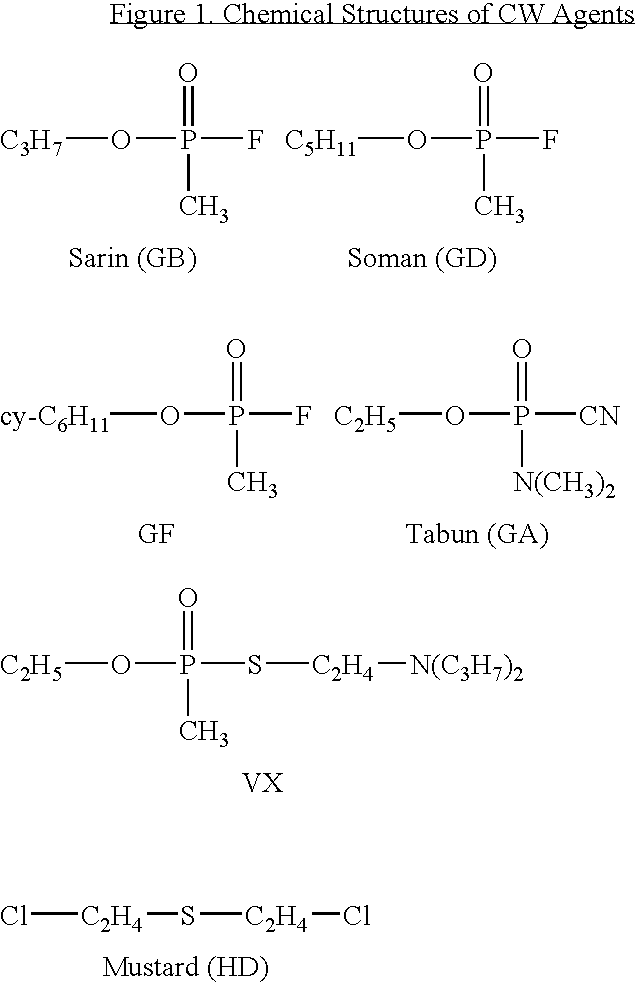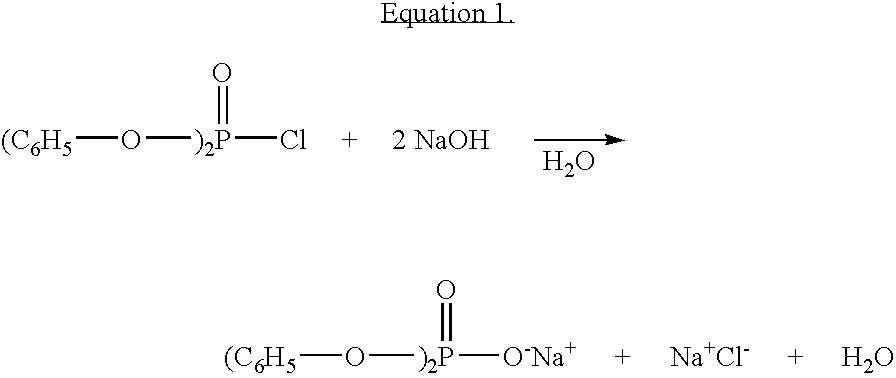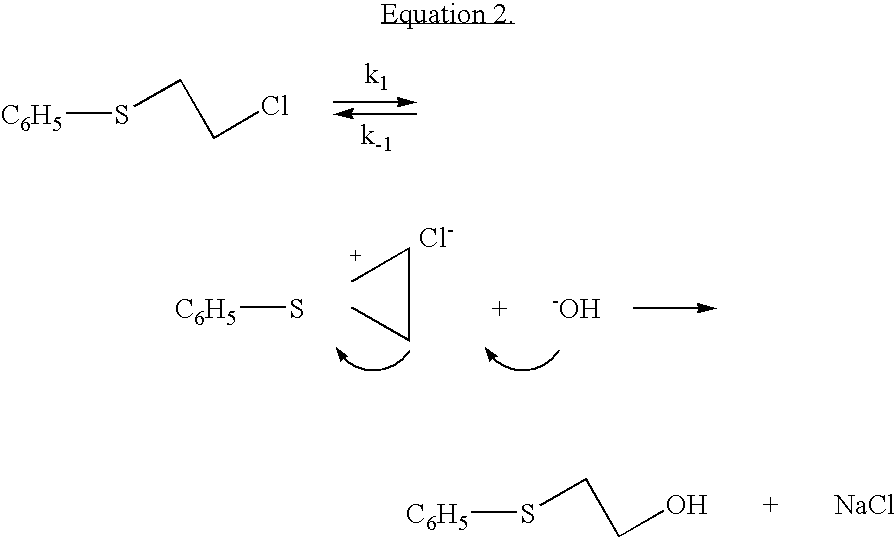Dual-use micro encapsulation composition for hydrocarbons and detoxification of highly hazardous chemicals and substances
a micro-encapsulation and hydrocarbon technology, applied in the field of hydrocarbon spill remediation, can solve the problems of difficult removal, limited selection of treatment process, and many sites contaminated with hazardous organic substances, and achieve the effect of reducing the level of toxicity in the environment and detoxification in the “dual use” system
- Summary
- Abstract
- Description
- Claims
- Application Information
AI Technical Summary
Benefits of technology
Problems solved by technology
Method used
Image
Examples
example 1
Alkaline Sodium Silicate and Acidic Polymer Micro Encapsulation Formulations
[0129]The compositions shown in Table 2 are representative of the sodium silicate formulations of the invention using different surfactant mixtures. All formulations perform well in the micro encapsulation of hydrocarbons and chemicals. Entries 1-5 are examples of sodium silicate micro encapsulation formulations of the invention. Entry 7 was the silicate formulation used for nucleophilic hydrolysis of CB Agents and oxidation using sodium percarbonate. Entry 6 is a preferred sodium silicate formulation for micro encapsulation and detoxification with peracetic acid for CB Agents followed by micro encapsulation. The compositions and manufacturers of the components are provided in Table 2A. The order of addition to prepare the sodium silicate formulations of the invention follows: Usually a small amount of the water (25 weight percent) is added to the anionic surfactant followed by the nonionic surfactant and a ...
example 2
[0131]A sample of used motor oil (UMO) was micro encapsulated using equal parts silicate (Table 2, Entry 6) and polymer formulations (Table 3, Entry 2) by weight of the used motor oil, allowed to air dry then TCLP extracted and analyzed by gc as shown in Table 5. The BTEX levels were reduced to below the limit of detection for the gc procedure. Most of the extractable metals were substantially reduced by the micro encapsulation process except for those metals like sodium and calcium present in the micro encapsulation formulations. Cadmium and chromium were present only at very low levels in the micro encapsulated UMO, but since the UMO was not acid digested, cadmium and chromium were below the limit of detection (0.250 ppm). Leachable lead was substantially reduced by micro encapsulation. Even though phosphorus was present in the micro encapsulation system, the level of phosphorus from the UMO was substantially lowered by micro encapsulation. This experiment demonstrates the benefit...
example 3
[0132]A sample of micro encapsulated UMO produced with the inventive formulations (Table 2 Entry 6 and Table 3 Entry 3) was extracted according to the Multiple Extraction Procedure (MEP) EPA Method 1320 to establish the benefit of micro encapsulation technology for spills. This procedure is designed to simulate the leaching that a waste will undergo from repetitive precipitation of acid rain on an improperly designed sanitary landfill. The repetitive extractions reveal the highest concentration of each constituent that is likely to leach in a natural environment. The micro encapsulated samples are first extracted according to the Extraction Procedure Toxicity Test Method 1310 and analyzed for the constituents of concern. Then the solid portions of the extracted waste samples that remain after application of Method 1310 are re-extracted nine times using synthetic acid rain extraction fluid. If the concentration of any constituent of concern increases from the 7th or 8th extraction to...
PUM
| Property | Measurement | Unit |
|---|---|---|
| pH | aaaaa | aaaaa |
| residence time | aaaaa | aaaaa |
| contact time | aaaaa | aaaaa |
Abstract
Description
Claims
Application Information
 Login to View More
Login to View More - R&D
- Intellectual Property
- Life Sciences
- Materials
- Tech Scout
- Unparalleled Data Quality
- Higher Quality Content
- 60% Fewer Hallucinations
Browse by: Latest US Patents, China's latest patents, Technical Efficacy Thesaurus, Application Domain, Technology Topic, Popular Technical Reports.
© 2025 PatSnap. All rights reserved.Legal|Privacy policy|Modern Slavery Act Transparency Statement|Sitemap|About US| Contact US: help@patsnap.com



